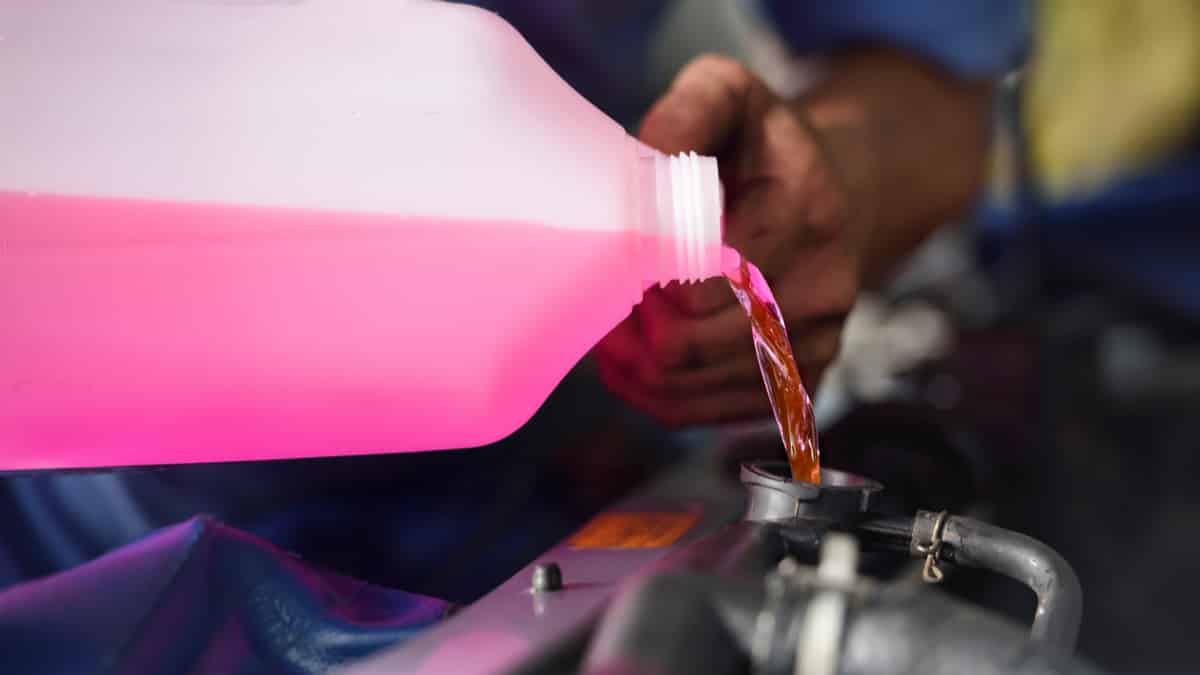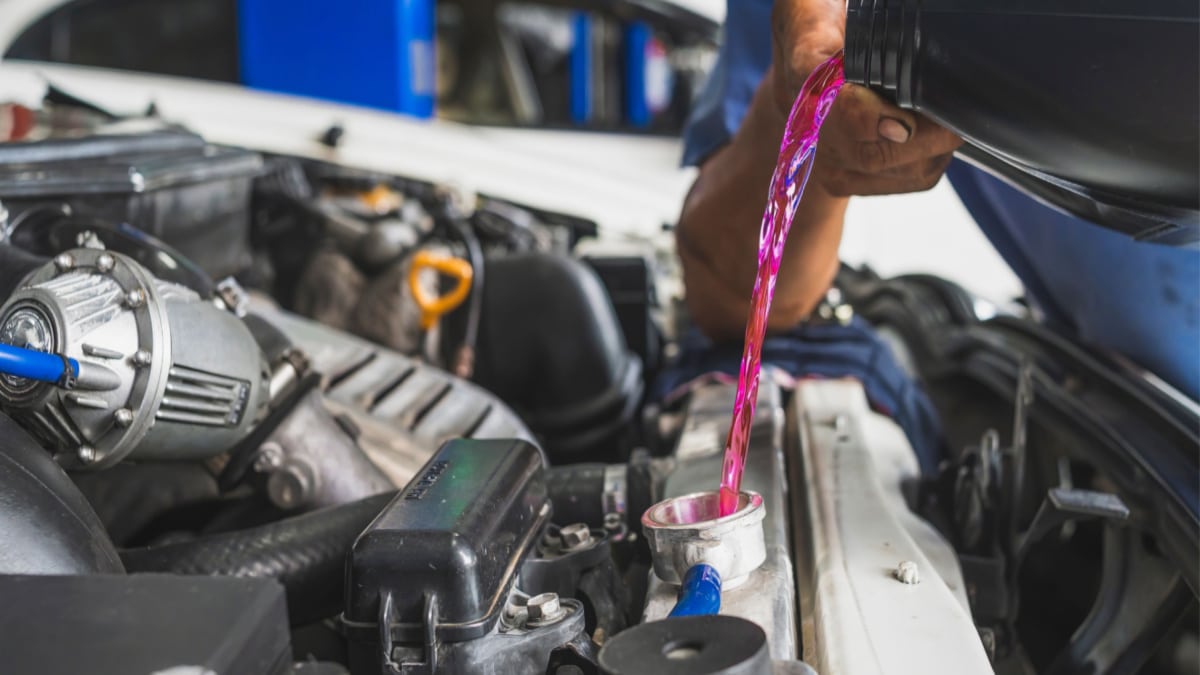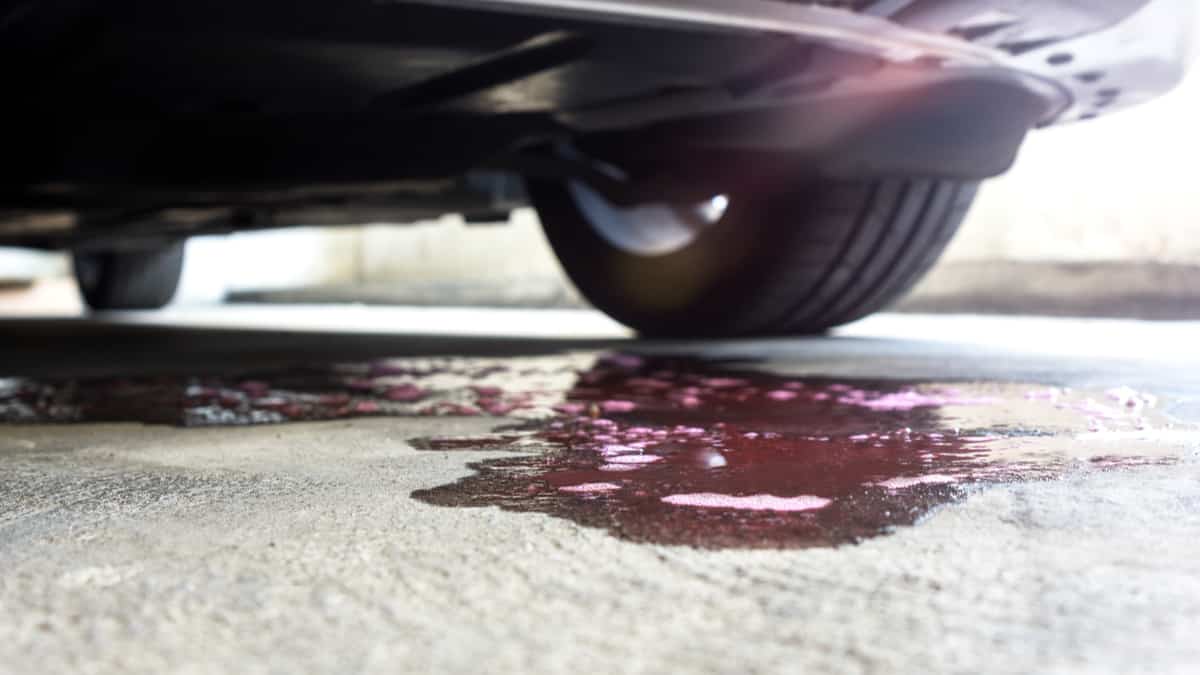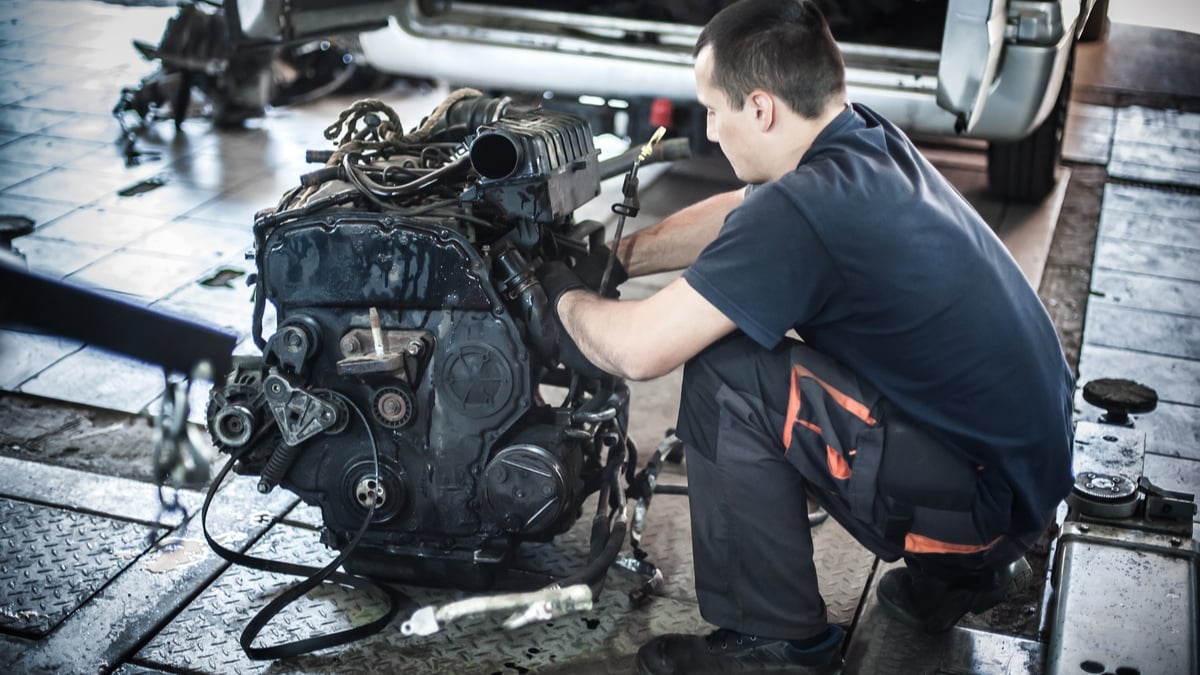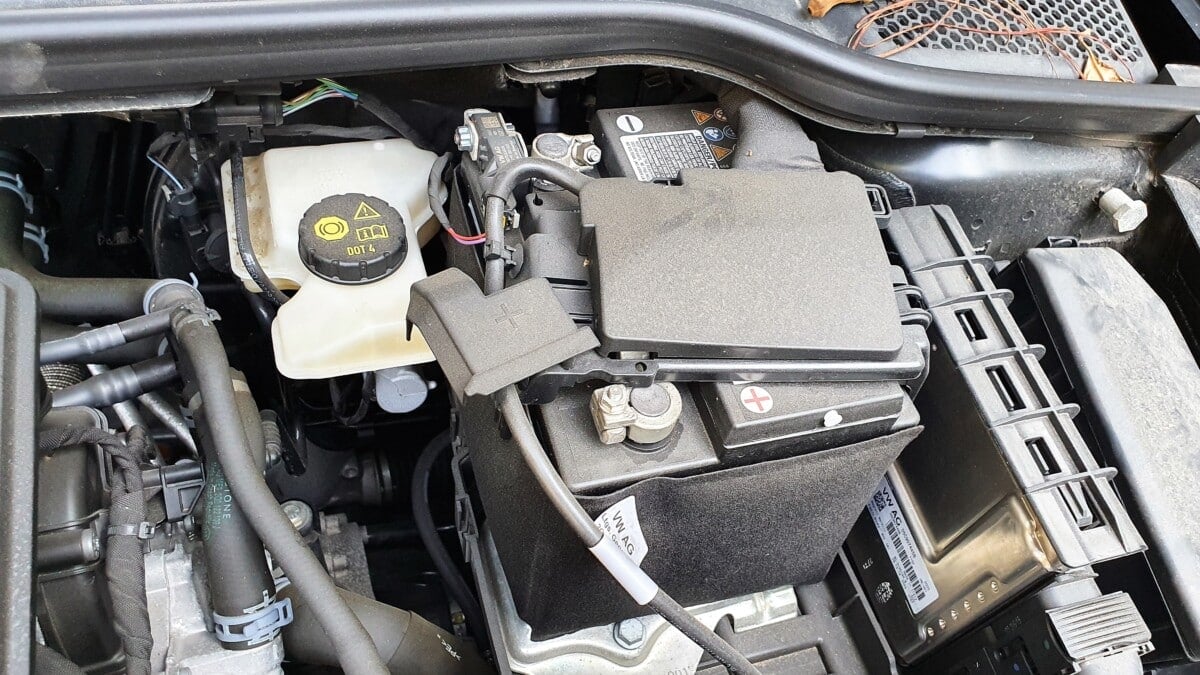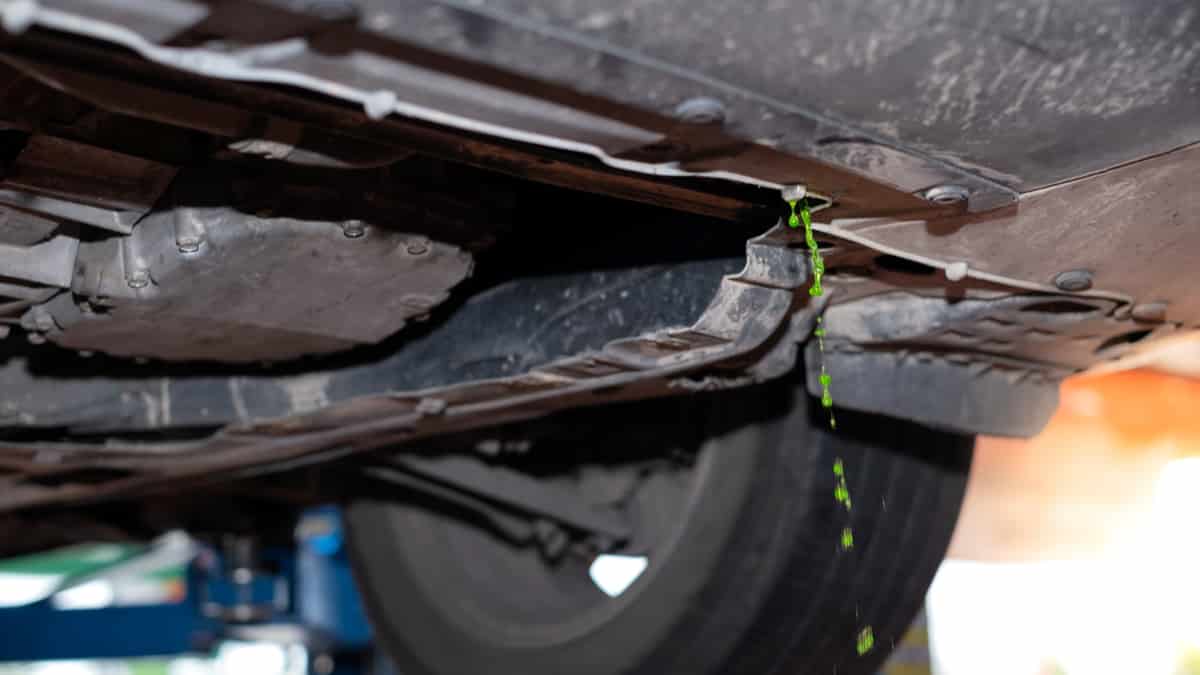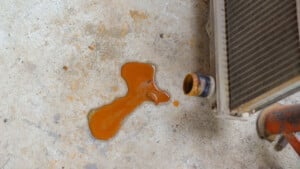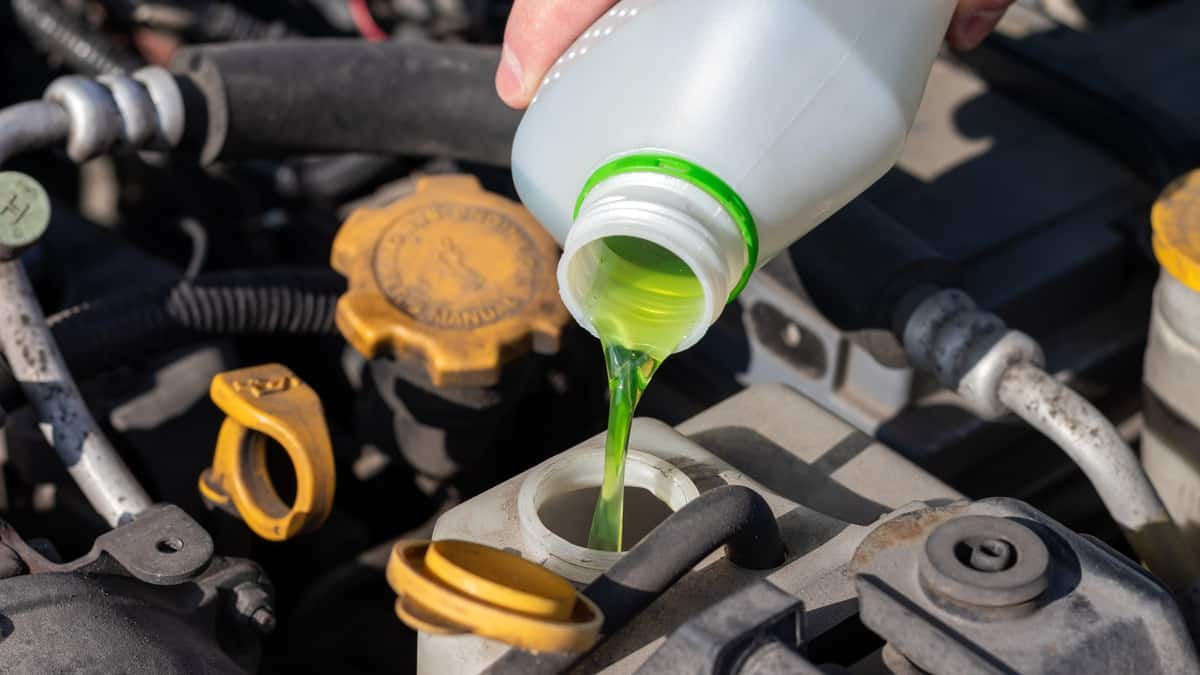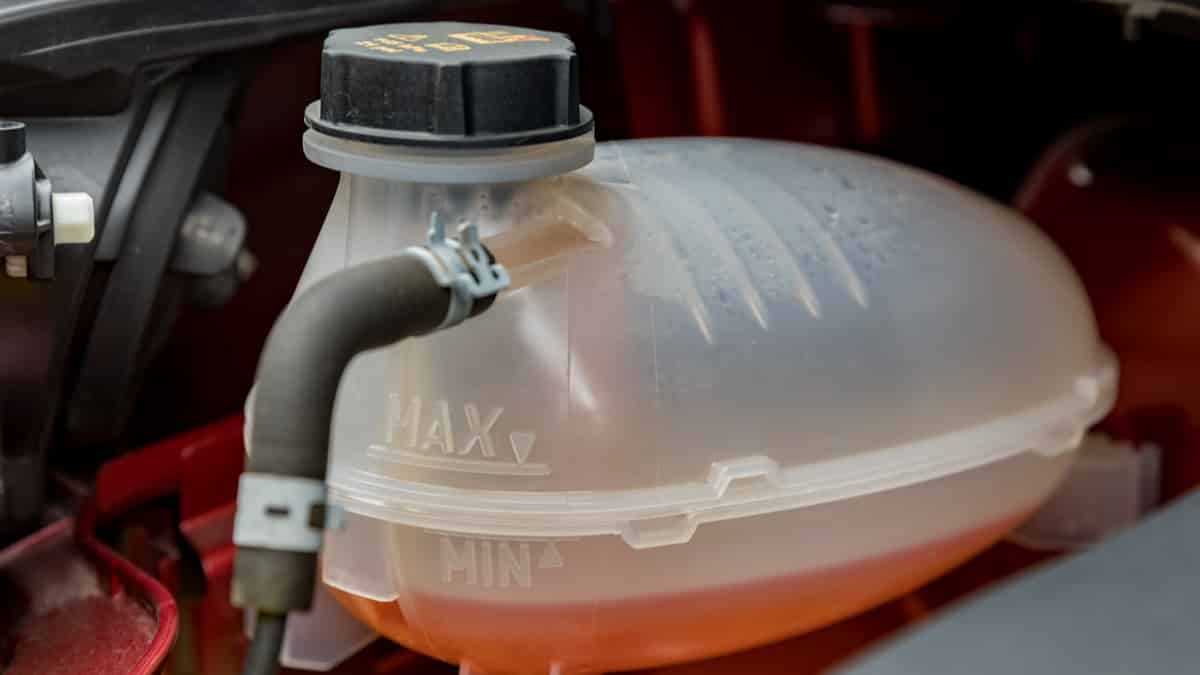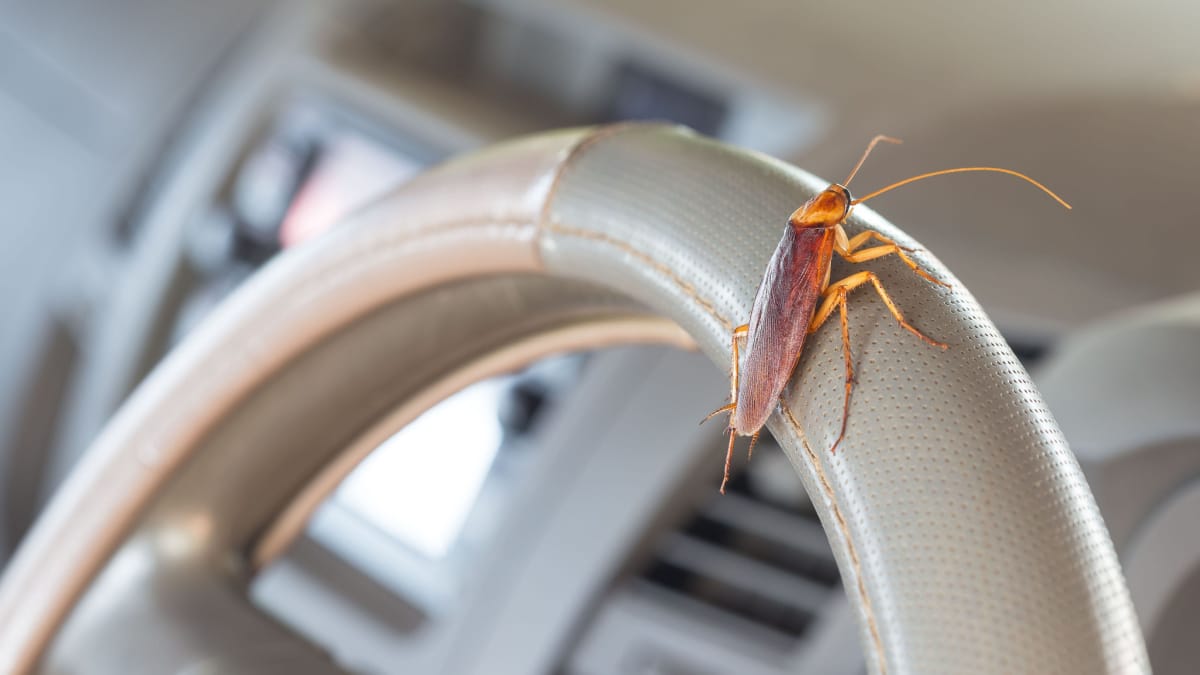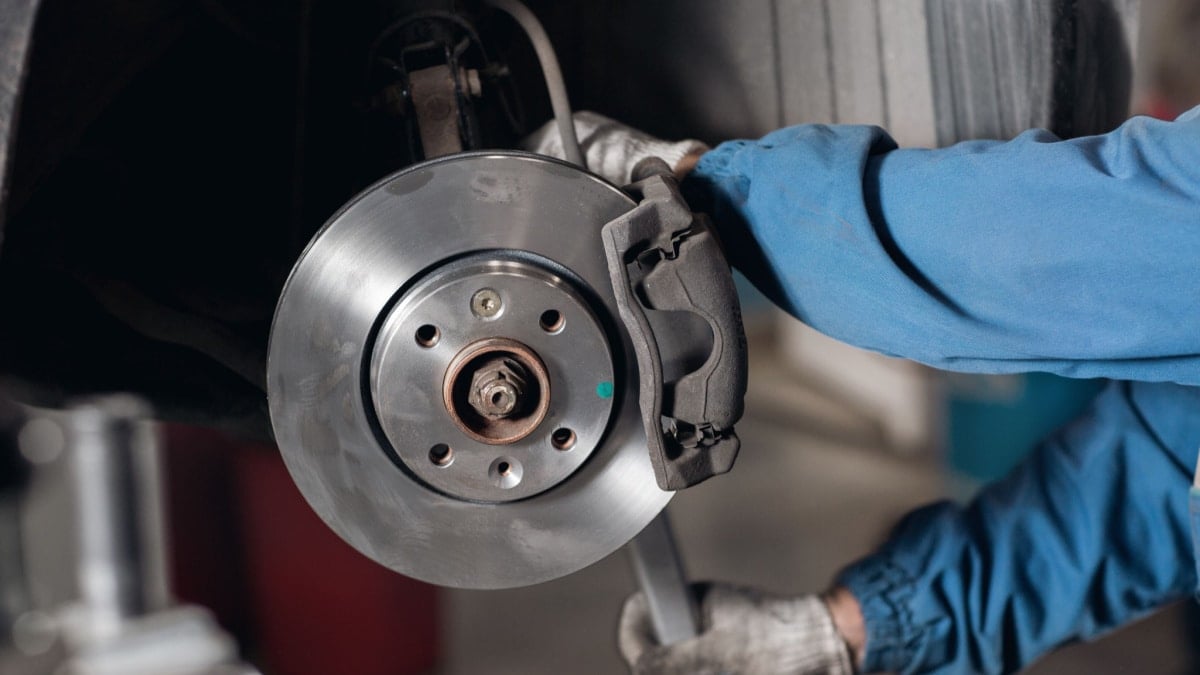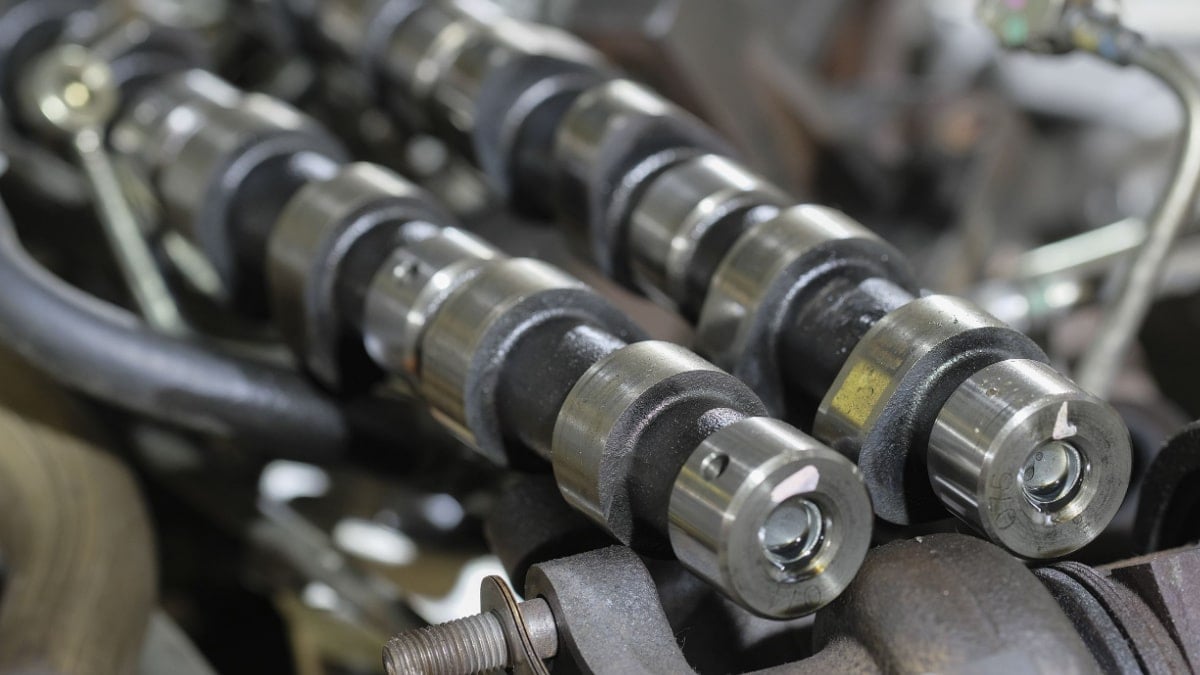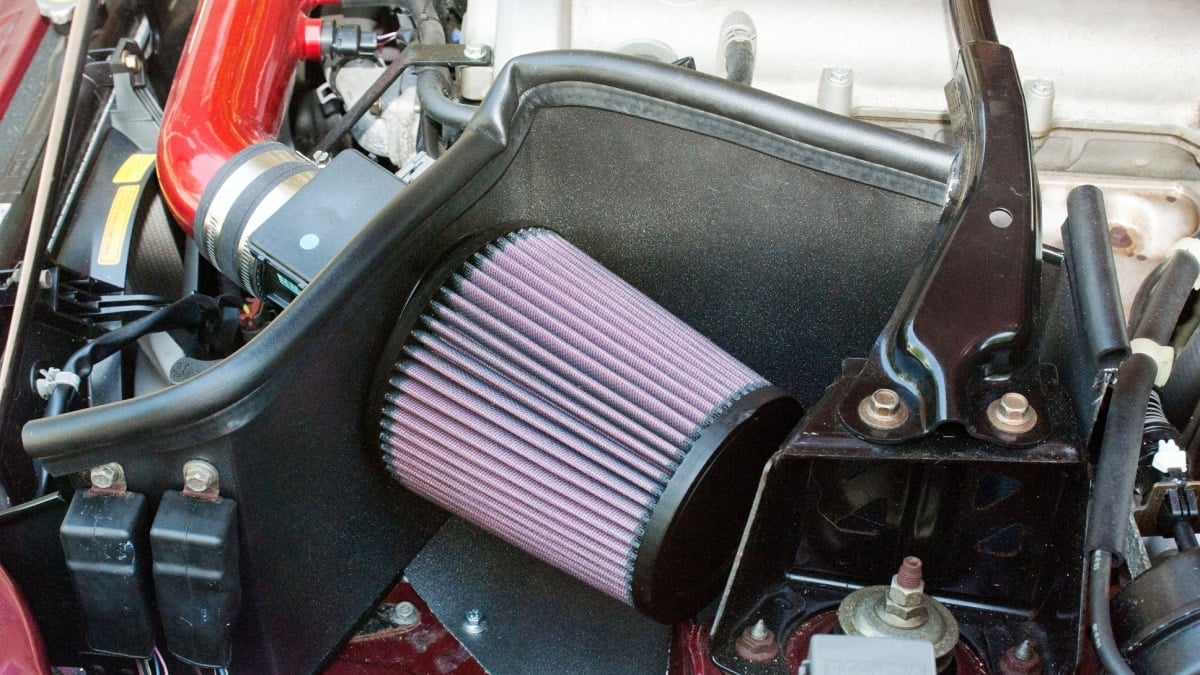Your vehicle uses many different types of fluid to run properly. One of the critical fluids to pay attention to is the antifreeze. If you don’t know how to add antifreeze to your vehicle or how often it should be done, this article is for you.
I cover the basics of antifreeze, including some safety guidelines you should always follow. Plus, I outline the steps to add more antifreeze to your car.
Antifreeze Safety Precautions
When you work with antifreeze, there are some safety precautions you should always follow. Here are a few to consider.
- Make sure your car is parked on a flat, even surface before you begin maintenance.
- Use the parking brake to keep the vehicle from rolling during service. Wheel chocks can also help to keep it stable.
- Add coolant with the engine turned off.
- The engine should be completely cool before you open the reservoir cap. If the engine is warm to the touch, it’s best to wait longer.
- Never wear loose clothing while servicing your vehicle. If you have loose sleeves, roll them up before getting under the hood.
- Wear protective equipment. It’s best to have safety glasses and gloves on. You may also choose to wear dirty clothes or an apron to protect against coolant stains.
- Never ingest antifreeze. It is extremely toxic. If you accidentally ingest coolant, you must call 911.
- Keep antifreeze away from children and animals. Store the coolant in a safe location.
It’s not difficult to service your own vehicle, but you always want to do so safely.
How to Add Coolant to Your Vehicle
To add antifreeze to your car, you must first gather all of your supplies, cool off the engine, and locate the coolant reservoir. Once you check the antifreeze levels, you can take off the cap and fill it appropriately. Plus, you want to inspect the system to ensure there are no leaks or problems.
Here is a more detailed list of how to add antifreeze to your vehicle:
1. Gather Equipment
Your vehicle requires a 50/50 combination of water and antifreeze, but some store-bought formulas are already mixed. Make sure you read the label carefully. It’s also important that you opt for the appropriate color based on what the manufacturer specifies. You can find antifreeze that’s colored blue, green, red, pink, yellow or orange. You can often find the manufacturer specs you need in the owner’s manual.
Aside from choosing the right coolant, you also want to have all of your supplies and tools handy for an easier job. After all, it only becomes more complicated if you need to walk away while filling the antifreeze to gather more supplies.
RELATED: Can you Mix Different Types of Coolant? (Which Types?)
2. Cool Car Engine
It’s important to turn off the car engine and give it time to cool down. Antifreeze shouldn’t be added while the engine is hot. Most importantly, you don’t want to get burned by touching a hot engine. Plus, the reservoir cap can be hot, holding back liquid that reaches boiling temperatures.
Another reason to wait is because any sudden temperature change can lead to cracks in the engine. If you rapidly change the temperature from hot to cold, you could face hefty engine repair bills.
Even if the engine has overheated and you need to add more antifreeze, it’s best to wait until the motor is cooler. Give it at least 15 minutes before you attempt to open the coolant cap.
3. Find Engine Coolant Reservoir
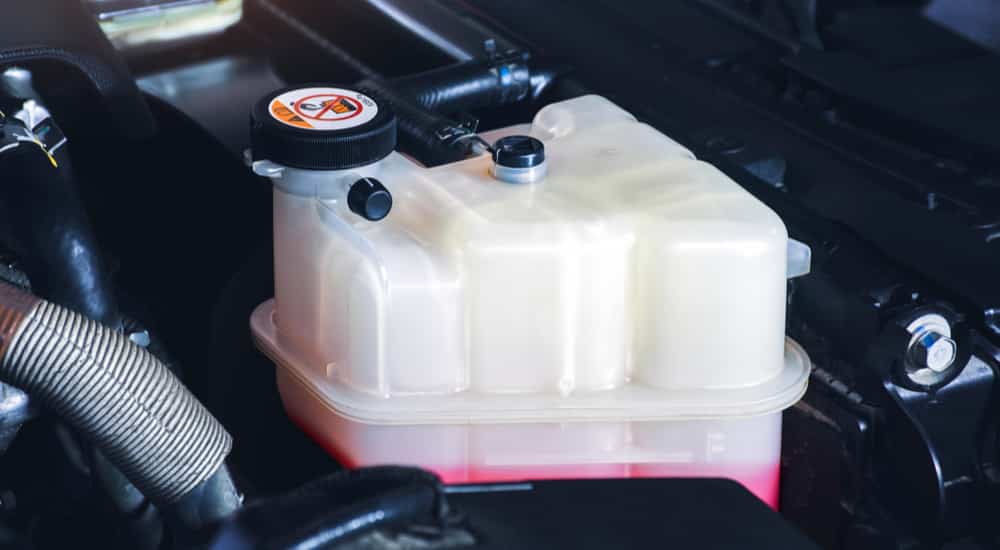
It’s not hard to find the coolant reservoir. Most brands use a colored cap to make it easier. Not only might it be painted yellow, but it should also have a warning on it, telling you not to open it while the engine is hot.
If you can’t find the plastic cap, look in your owner’s manual. This booklet outlines where the vital parts are located, including the coolant cap.
4. Check Antifreeze Levels
You should be able to check the antifreeze level without taking the cap off. If you look at the reservoir, you will see the minimum and maximum lines printed on it.
With the bright-colored coolant inside the translucent container, it’s easy to gauge. The coolant level must be between these two markers. The levels will change depending on whether the engine is hot or cold, but keeping it between these lines ensures proper operation at all times.
5. Take Off Cap
If you need to top off the system, you have no choice but to remove the reservoir cap. It should screw off, but you should use caution.
Any damage to the cap can lead to cooling system issues. Use caution, so it doesn’t become damaged in the process.
6. Add the Antifreeze
If the antifreeze needs to be diluted, now is the time to do so. Once you have the appropriate mixture, it’s time to add some into the system.
With the use of a funnel, you can pour the appropriate amount of antifreeze into the reservoir. Once it reaches between the two indicator lines, you will stop pouring.
7. Check System
Fasten the cap back in place and run the car engine. You want to perform a quick inspection of the cooling system, looking for any leaks or issues.
If you notice a leak, you must deal with the problem promptly, or the engine could overheat. Otherwise, you are ready to hit the road. If the coolant system was almost empty before, you may need to bleed the cooling system.
RELATED: 5 Causes of a Coolant Leak (& How to Fix it)
What is Antifreeze?
Antifreeze is a type of engine coolant that is responsible for regulating motor temperatures. In warmer weather, the antifreeze keeps the water in the cooling system from boiling over. It works with liquids that reach more than 275 degrees Fahrenheit. On the other hand, when temperatures get lower, the antifreeze keeps liquids from freezing.
Antifreeze is also needed to lubricate various components, such as the water pump. If there isn’t lubrication, permanent damage can occur. Finally, antifreeze helps to reduce corrosion.
Antifreeze is made from propylene glycol or ethylene glycol. It may also contain special additives to prevent corrosion and oxidation, but these additives will generally make up fewer than 10% of the mixture.
How Often Should Antifreeze be Added?
You need to put more antifreeze in the system any time the levels get too low. Generally, this shouldn’t happen unless there is a leak.
It’s also important that you have the coolant changed after 60,000 miles. Once the first service is performed, you might choose to have it replaced every 30,000 miles. However, you want to follow whatever guidelines the automaker sets out in the maintenance schedule, as some recommend different terms.
Types of Antifreeze
IAT coolant is one of the most commonly used. The Inorganic Additive Technology has been around for several decades and it provides superior corrosion protection. You might know this type as ZEREX Original Green, which is a popular brand.
Another common formula is Dex-Cool, mainly used in GM vehicles. However, older vehicles require special additives, such as AlugardPlus. You can find this in a Multi-Vehicle Antifreeze formula. Reference the owner’s manual to find out what type of antifreeze is required for your vehicle.
Antifreeze vs. Coolant
Many people use the terms coolant and antifreeze interchangeably, but they are not the same. Coolant is the mixture between water and antifreeze. It’s what’s needed to fill the cooling system. Antifreeze is made from propylene glycol or ethylene glycol, but it must be diluted to work correctly.
You can find antifreeze that needs to be diluted on the store shelves. You can also find coolant that has already been mixed.
What if Coolant Levels Drop Without a Leak?
If you notice that the antifreeze level has dropped too low, but there’s no leak, you could have some serious problems on your hands. In most cases, this situation means that the coolant is leaking internally into areas where it doesn’t belong.
Some possible causes are a damaged cylinder head, a manifold leak, malfunctioning cylinder bores, or a blown head gasket. With any of these problems, you are looking at extensive repairs to save the engine.
RELATED: Low Engine Coolant Level? (Causes & Consequences)
Categories: Coolant, Guides, Maintenance
